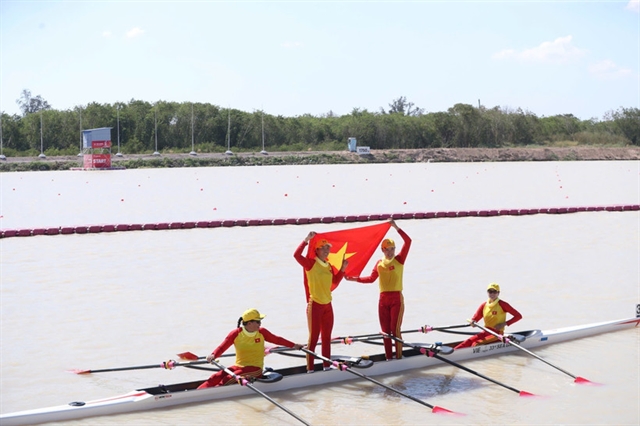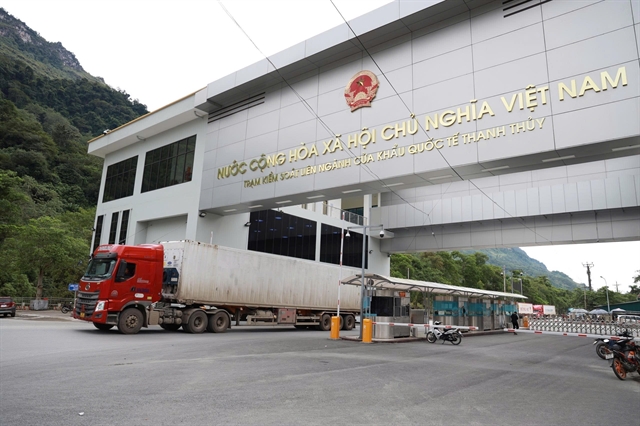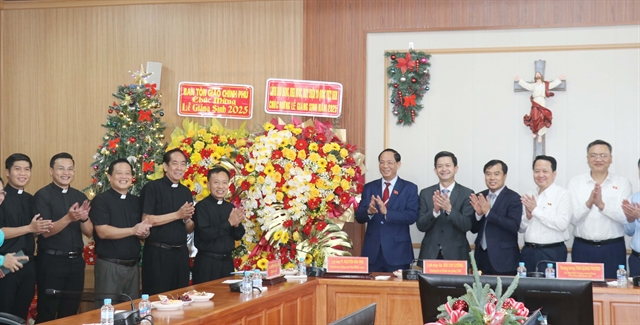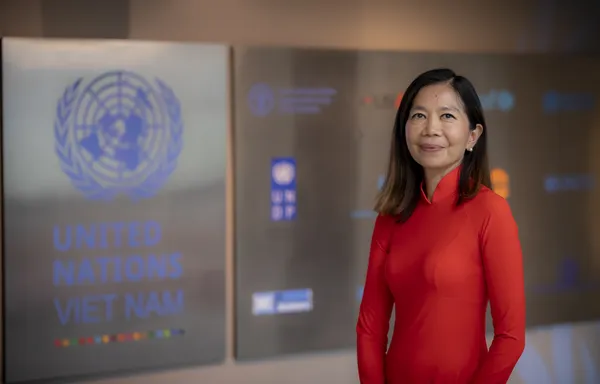 Op-Ed
Op-Ed

 |
| From left: Deputy Secretary-General of ASEAN for ASEAN Economic Community Satvinder Singh, Ambassador of Japan to ASEAN Kiya Masahiko & UN Assistant Secretary-General and UNDP Regional Director for the Asia and Pacific Region Kanni Wignaraja. |
On the occasion of the launch of the Blue Innovation Challenge project from ASEAN, Japanese Government and United Nations Development Programme (UNDP) slated on Tuesday, 14 May 2024, the three sides have written an Op-ed highlighting the remarkable global impact of the blue economy, and how ASEAN region can capitalise on these resources with actionable steps.
SOUTHEAST ASIA — Ocean and freshwater systems, including rivers, lakes, and oceans, form vital ecosystems crucial for human survival and prosperity. They play a pivotal role in sustaining life on a large scale and offer solutions to challenges like poverty, food insecurity, climate change, and conflict. For instance, local fishermen in Wakatobi National Park are benefitting from community-managed marine protected areas, leading to opportunities for income generating activities through eco-tourism and seaweed farming. At the same time, the careful approach to balance the use of marine resources while maintaining its sanctity has also helped to restore fish populations, safeguarding the vast potential of blue resources.
The blue economy's global impact is remarkable, with its contribution to the economy projected to double from US$1.5 trillion in 2010 to $3 trillion by 2030, creating 43 million jobs across sectors like fishing, aquaculture, tourism, and research. This growth trajectory positions the blue economy as a key driver of sustainable economic development and global prosperity.
The ASEAN region includes countries with extensive territorial waters covering over 60 per cent of the total area, and nine out of ten ASEAN countries border the sea, and the region boasts a diverse array of marine resources that significantly contribute to the global economy. Despite being landlocked, Lao PDR, the current Chair of ASEAN, enriches this tapestry with its abundant freshwater resources, further enhancing the region's diverse development potential.
Recognising the vast promise of the blue economy, ASEAN leaders took a significant step in 2021 by adopting the ASEAN Leader’s Declaration on the Blue Economy in Brunei Darussalam. This landmark declaration aims to transform and diversify the region’s economies, envisioning the blue economy as a catalyst for a more sustainable growth and development. Subsequently, the ASEAN Blue Economy Framework was adopted under Indonesia’s ASEAN Chairmanship in 2023, serving as a comprehensive guide to harnessing and managing marine ecosystem sustainably, for the benefit of the people in this region. They are also aligned with, and contribute to mainstreaming the ASEAN Outlook on the Indo-Pacific (AOIP) adopted in 2019.
Nevertheless, ASEAN member states face a multitude of challenges that must be addressed to protect and optimally manage their blue resources for the benefit of their people and economies. And one country cannot do this alone. Issues like overfishing, habitat degradation, and marine pollution not only threaten the region's marine ecosystem but also impact freshwater resources. The deterioration of essential habitats, including coral reefs and mangroves, not only disrupts biodiversity but also undermines the long-term sustainability of both marine and freshwater resources. Governance issues, such as the need for rules-based management of maritime and water resources, inadequate infrastructure, coupled with technological and human resources constraints, further compound these challenges, underscoring the urgent need for collaborative efforts to address them.
At the heart of addressing these persistent development challenges lies the transformative power of innovative solutions. To cultivate a thriving economy within the ASEAN region, an emphasis on innovation across science, technology, and pragmatic business models for start-ups, and for Micro, Small and Medium-sized Enterprises emerge as a cornerstone for progress.
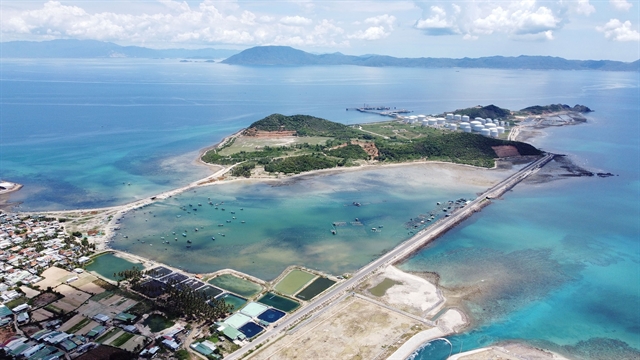 |
| Vân Phong Economic Zone in the south-central province of Khánh Hoà. — VNA/VNS Photo Huy Hùng |
Furthermore, to address such challenges and advance the blue economy in the ASEAN region, concerted efforts and regional cooperation is indispensable. An exemplary demonstration of this collaborative spirit is showcased through the project “Enabling Blue Innovation Solutions for ASEAN’s Blue Economic Growth, including through Nurturing Start-ups and MSMEs” – or the “ASEAN Blue Economy Innovation project” in short. This is being launched by ASEAN through the ASEAN Coordinating Committee on Micro , Small and Medium Enterprises (ACCMSME), with the support of the Government of Japan and United Nations Development Programme (UNDP) working out of its office in Jakarta. This transformative endeavour is strategically designed to enhance marine and freshwater governance, optimise resource management, and foster sustainable development across all ten ASEAN member states and Timor-Leste.
This new ASEAN project also builds on Japan's unwavering dedication to ocean sustainability as underlined in its “MARINE Initiative,” a comprehensive programme aimed at combatting marine plastic pollution on a global scale. The initiative focuses on (1) MAnagement of wastes, (2) Recovery of marine litter, (3) INnovation, and (4) Empowerment, all contributing to the realization of the visionary "Osaka Blue Ocean Vision,” which sets a target to eliminate pollution from marine plastic litter by 2050. Japan's multifaceted efforts encompass supporting the development of policy and legal frameworks, introducing sustainable infrastructure, and facilitating knowledge sharing on cutting-edge technologies crucial for marine conservation.
Likewise, over the past 25 years, UNDP has emerged as a leading advocate for ocean protection, restoration, climate change mitigation, and sustainable economic growth on a global scale. Having mobilized more than $1 billion for ocean protection and restoration efforts in over 100 countries, UNDP is steadfast in its commitment to promoting a sustainable global blue economy that harnesses ocean and freshwater resources for inclusive development. Through initiatives like “Ocean Promise”, UNDP envisions a future where a balanced and sustainable blue economy accelerates economic development, creates jobs and livelihoods, ensures food security, reduces poverty, promotes gender equality, and fosters overall societal equality. In this context, for example, UNDP has helped realise the vision of the Government of Indonesia to enhance multilateral cooperation to promote the blue economy and protect marine environments through the Archipelagic and Island States Forum or the AIS Forum.
To propel these visions forward together, we have launched the “ASEAN Blue Innovation Challenge” as part of the new “ASEAN Blue Economy Innovation project” , in all ten ASEAN countries and Timor-Leste. The ASEAN Blue Innovation Challenge stands as a conduit for private entrepreneurs, inventors, academics, and researchers to collectively drive change through sustainable solutions. Designed to spark innovation, this initiative will offer each of the 60 winning innovators and entrepreneurs up to $40,000 of financial award as well as incubation support. By empowering innovators to translate their visions into reality, the initiative seeks to instigate genuine and impactful transformation, with a specific emphasis on fostering the participation and success of female innovators and entrepreneurs within the ASEAN ecosystem.
Innovation in the blue economy used to be challenging, but successes are emerging. In Southeast Asia's coastal communities, stories of empowerment and innovation are converging to shape a brighter future. For example, Maria da Gloria Mendes from Natarbora in Timor-Leste created the Tok-Derek Women’s Cooperative, a small enterprise that stands as a beacon for gender inclusion and economic sustainability in fisheries. Through training sessions and community engagement, women like Maria are forming cooperatives and building resilient networks that uplift entire communities.
Similarly, in Indonesia's Rote Ndao District, the journey of Mama Metri epitomizes the spirit of resilience and ingenuity. Transitioning from fishing to soap production, she led Ita Esa, showcasing the transformative power of local knowledge and natural resources. Her dedication to mangrove preservation and sustainable practices reflects a broader ethos of environmental stewardship.
As we look to generate more success stories like these, we urge and invite all the brilliant and forward-thinking minds within the ASEAN countries and Timor-Leste to heed the call to action for the “ASEAN Blue Innovation Challenge”. The deadline to respond to this call is 31 May 2024, and you can find more information at https://bit.ly/ASEANABIC. Your innovative ideas, unique perspectives, and creative solutions are indispensable in our shared mission to protect and preserve our oceans and the freshwater ecosystem, while harnessing their economic potential. VNS

